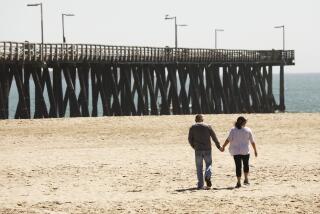SUBWAY WATCH : Smelly Problem
- Share via
A new problem with Los Angeles’ Red Line--gases like potentially explosive methane and smelly hydrogen sulfide have been leaking into it--will not make it any easier to convince the public that the city’s new subway is safe.
Monday’s gas leak story follows earlier reports in The Times that some tunnel segments of the subway’s first leg, underneath Downtown, were built with concrete thinner than called for in the original design specifications.
Of course, the fact the subway is prone to gas leaks is much less of a surprise than the thin-concrete problem. Los Angeles was once the site of major oil fields, so subway designers knew that keeping gases out of the system would be a challenge. In fact, $2 million per mile has been spent to insulate the tunnels against gas, and gas detectors and additional ventilation were installed. But now it appears that more gas than predicted is getting in. Some of those involved in the subway project have suggested the problem is caused by the same unacceptable construction practices that produced the thin tunnel walls.
If so, that’s unfortunate, but it would be well for would-be subway riders to remember that, as a result of the thin-wall flap, the Metropolitan Transportation Authority asked a panel of independent engineering experts to inspect the tunnels. They recommended some repairs but also concluded the subway is safe.
The emergence of the new problem should not have a major effect--except to emphasize to MTA officials that they must be constantly vigilant to make sure the subway stays safe.
More to Read
Sign up for Essential California
The most important California stories and recommendations in your inbox every morning.
You may occasionally receive promotional content from the Los Angeles Times.













